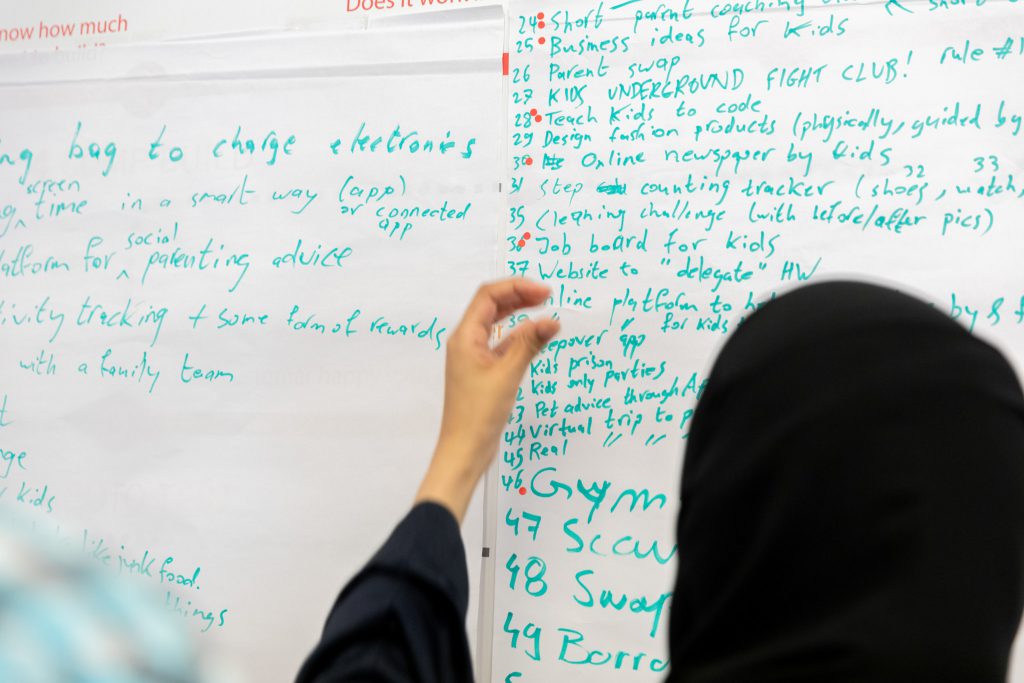Coming up with the next big startup idea might seem impossible, but after years of teaching innovation and entrepreneurship here at KAUST, we are here to tell you that anyone can come up with a life-changing idea.
Ideas are the essence of innovation – and the best ones can turn into incredibly successful products and services. The device you’re reading this on started as nothing but an idea. But how do people come up with startup ideas?
In this article, we’ll explain…
- Why so many startups fail
- Why you should solve problems you experience
- How to come up with a startup idea
- How to tell if your business idea is any good
- Where you can learn more
Why Do Startups Fail?
We have all heard the statistics about how many startups fail – according to one report, a staggering 90% won’t make it. So how can you make sure that you are in the 10% that do? According to Harvard Business School there are 2 key areas that determine startup success: product/market fit and a strong team.
Often the top-cited reason for startup failure are issues with product/market fit – or lack of a market need. You might have an innovative and interesting solution – but having a product that solves a real demand in the market is critical to getting your business off the ground. No matter how amazing you think the idea, there is no substitute to validating your idea early and widely as we will see below.
And just how important is the team? For some VCs, it’s everything. Paul Graham, Y Combinator founder, said it best, “…the relationship between the founders has to be strong. They must genuinely like one another, and work well together. Startups do to the relationship between the founders what a dog does to a sock: if it can be pulled apart, it will be.”
An experienced founding team that works well under pressure is key to long-term startup success. That, and recognizing that if you don’t have the right skill sets, being open to hiring in the best talent for your startup.
How to Create Your Next Startup Idea
The first step to coming up with a good startup idea is to think about problems. Forget about trends and business ideas, instead spend one month identifying problems that need solving.
Here’s how to get started.
1. Begin with Your Interests
The best kinds of startup ideas are going to be connected to your life and solve a problem that is real to you. These startups might even start as a passion project or a hobby. When you are pursuing something that you enjoy – and an idea that might even be useful – you become less afraid to fail.
Take stock of your interests and start there:
What do you love doing?
What are you good at?
What are your hobbies?
Which causes do you care about?
How do you make money?
When you’re interested in a particular subject, then you’ll automatically seek out more information about it. And the more you know, the likelier it is you’ll come up with an idea.
2. Write Down Problems You Face
Be curious and start looking at your everyday with a critical eye. You will probably encounter challenges, big and small, throughout your day.
These may seem insignificant – one of your home appliances breaks. You get stuck in traffic on your way to work. The work itself takes longer than planned. Miscommunication between colleagues leads to mistakes and the list of problems goes on, so write them all down.
Make a note of all the challenges you face and don’t come up with an immediate solution to any of them yet.
3. Ask People About Their Problems
If you’ve found a problem that you struggle with yourself, then chances are you’re not alone. That’s great news because it means you are about to solve a problem that directly impacts you and those around you.
In other words, there’s a potential market for it.
Now you have to do some market research. Send out a survey, host an informal focus group to get a better understanding of the problems (and how people currently solve them), or take your research to Google and find out what people say about the problem online; has anyone written articles or books about it? Are people discussing it on forums and social media? Has anyone else tried (and failed) to solve it?
See if you can spot a pattern out of your research:
What kind of people are they?
Why do they have this problem?
How big of a problem is it?
What would a solution mean to them?
This will give you a healthy m of quantitative and qualitative data.
If many people have tried to find a solution, then you might have to invest a lot more time and resources than you initially expected. And if the problem isn’t common enough for there to be a market for a solution, then you possibly shouldn’t pursue the venture at all.
4. Design a Solution
Innovation is a design process. This means that coming up with new ways to solve problems requires a framework for effective brainstorming. This process is often called “ideation,” defined by Stanford’s d.school as:
“Ideation is the mode of the design process in which you concentrate on idea generation. Mentally it represents a process of ‘going wide’ in terms of concepts and outcomes. Ideation provides both the fuel and also the source material for building prototypes and getting innovative solutions into the hands of your users.”
Tool: How Might We
Start by framing the challenge you see as a How Might We question. This process allows you to reframe challenges into solutions. Break up your challenge into many different parts and tackle the “How might we…” according to different users, products, points of view or resources. This process will help kick start your brainstorm.
Tool: Brainstorming potential solutions
Almost everybody has participated in a brainstorming activity – but often these are just discussions (and judgments) about what ideas might work or not work. Brainstorms should be structured sessions that leverage the synergy of the team to create numerous and unexpected solutions and possibilities.
The intention of your brainstorm is to generate both a large number of ideas and a diverse set of ideas. The intention is not to come up with only good ideas. Focus on quantity, build off other ideas, and allow yourself to be silly, crazy or fictional – and the good ideas will come.
How Do You Know If Your Startup Idea Has Potential?
Once you’ve done your research, brainstormed ideas and found the best one, it’s time to evaluate whether or not it has the potential to succeed.
Most of what you’ve written down so far is based on assumptions.
There’s only one way to find out whether those assumptions were right, and that is to test your product or service. This method will give you confidence that your solution is desirable, feasible, and viable, as well as accelerate learning when you adopt a low-resolution prototyping mindset.
Build a prototype, contact the people who could benefit from it, then ask them to try it out and give you detailed feedback on their experience.
Start by asking them these basic questions:
Did it solve their problem?
Could anything be improved?
Would they be willing to buy one?
What if it was still incomplete?
How much would they pay?
Next step: Learn more about how NOT to prototype a service and get feedback and how to conduct a proper prototyping activity.
What’s Next?
This approach is a basic guide to finding your next startup idea. If you’re interested in startups or ideation KAUST has programs and training to help you find the next great startup idea. Our mission is to help accelerate the next-generation startups in Saudi Arabia through mentorship, business training, access to co-working offices, prototyping labs, and funding.
We’re always looking for entrepreneurs who have the potential to solve big global challenges and create long-term economic and social impact in the region. If that sounds like you, learn more about our TAQADAM Startup Accelerator program and our funding offerings.
Learn about TAQADAM Startup Accelerator Program
Discover the KAUST Research and Technology Park
Apply for venture funding from the KAUST Innovation Fund





